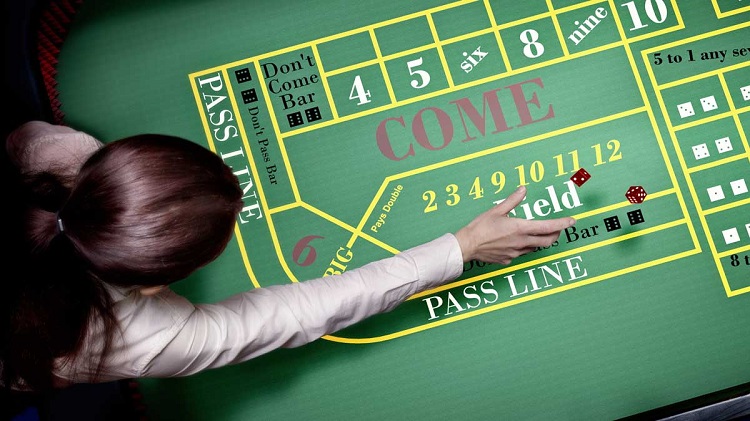Craps is one of the most exciting and dynamic games in the casino, offering players a chance to experience the thrill of high-paced betting action. However, behind the flashing lights and energetic rolls of the dice lies a crucial concept: the house edge. For players seeking to optimise their gameplay or better understand their odds, grasping the intricacies of house edge calculations for compound bets is essential.
What is the House Edge?
In simple terms, the house edge is the mathematical advantage that the casino holds over players in a given game or bet. This advantage ensures the casino will make a profit over the long term. For players, the house edge translates into the percentage of each bet that the casino expects to keep as profit.
In craps, the house edge varies depending on the type of bet placed. Some bets, like the pass line bet, offer relatively low house edges, while others, such as certain proposition bets, carry much higher percentages. Compound bets, however, introduce additional complexity to these calculations, making them a topic worth exploring in detail.
Understanding Compound Bets in Craps
Compound bets in craps are wagers that involve multiple outcomes or stages. Instead of placing a straightforward single-roll or multi-roll bet, players may combine wagers or make bets that require multiple conditions to be met. Examples include:
- Hardways bets
- Lay bets
- Field bets combined with other wagers
- Hop bets with multiple combinations
The potential payouts for compound bets can be enticing, but they come with a trade-off: a more significant house edge in most cases. Understanding how this edge is calculated is vital for informed decision-making.
Key Components of House Edge Calculations
Probability of Winning vs. Losing
The cornerstone of house edge calculations lies in the probability of winning versus losing. Every bet in craps has a set of odds that reflect the likelihood of a winning outcome. For example, rolling a 7 is more likely than rolling a 12 because there are more dice combinations that result in a 7.
For compound bets, probabilities become more intricate because they depend on the combined likelihood of multiple events. This complexity requires breaking down the bet into its components and calculating the odds for each stage.
Payout Ratios
Another critical factor in calculating the house edge is the payout ratio. This refers to the amount a player wins relative to their original bet when they succeed. Casinos deliberately set payout ratios slightly lower than the true odds of a bet. For instance, a bet with true odds of 5:1 might only pay 4:1, creating the house edge.
In compound bets, payouts often vary based on the specific outcomes involved. Accurately calculating the house edge requires understanding how these payouts stack up against the probabilities.
Expected Value (EV)
Expected value is a mathematical concept that helps quantify the overall profitability of a bet. It is calculated by multiplying the probability of each outcome by the payout for that outcome, then summing these values for all possible outcomes. For compound bets, the expected value must account for multiple probabilities and payouts, adding an additional layer of complexity.
Examples of House Edge Calculations for Compound Bets
Hardways Bets
Hardways bets involve wagering that a pair of identical numbers (e.g., two 3s to make a 6) will be rolled before a 7 or any other combination that produces the same total (e.g., 4+2). These bets are popular because of their relatively high payouts but carry significant house edges.
For example, the probability of rolling a hard 6 or hard 8 is 1 in 36. The payout for these bets is typically 9:1, but the true odds are 10:1. Using these figures, the house edge can be calculated as follows:
- Determine the expected value:
(Probability of winning × payout) + (Probability of losing × amount lost).
EV = (1/36 × 9) + (35/36 × -1). - Subtract the EV from the original bet to find the house edge percentage.
This results in a house edge of approximately 9.09% for hard 6 or hard 8 bets.
Lay Bets
Lay bets involve wagering against a specific number being rolled before a 7. These bets are the opposite of place bets and typically feature lower house edges than other compound bets. However, they still require careful calculation.
For instance, laying against a 4 or 10 involves true odds of 2:1, but the payout is adjusted to 1:2 after accounting for the casino’s commission. Calculating the house edge involves comparing the payout to the true odds, factoring in the commission fee.
Hop Bets with Multiple Combinations
Hop bets allow players to wager on specific dice combinations appearing on the next roll. Some hop bets cover multiple combinations, increasing the chances of success but lowering the payout for each individual combination. Calculating the house edge for these bets involves:
- Identifying all possible combinations covered by the bet.
- Determining the probability of each combination occurring.
- Comparing the total probability to the payout ratio for the bet.
For example, a hop bet covering three specific dice combinations might have a combined probability of 3/36 but offer a payout based on single-combination odds. This discrepancy creates the house edge.
Strategies for Managing the House Edge
-
Focus on Low-House-Edge Bets
Although compound bets can be tempting, the best way to manage the house edge is by prioritising bets with lower percentages. For example, pass line and come bets offer house edges as low as 1.41% when the odds bet is included. By focusing on these bets, players can reduce their overall losses.
-
Use Odds Bets to Offset Losses
Odds bets are unique in craps because they have no house edge. By adding odds to a pass line or come bet, players can reduce the effective house edge for their total wager. This strategy can help offset the higher edges associated with compound bets.
-
Understand the Risks of Proposition Bets
Proposition bets, which include many compound wagers, often have house edges exceeding 10%. While these bets can provide thrilling payouts, they should be approached cautiously. Understanding the specific house edge for each bet can help players decide when to take a chance and when to stick to safer options.
-
Practise Calculating House Edges
For players who want to deepen their understanding of craps, practising house edge calculations is an excellent exercise. By breaking down bets into their probabilities and payouts, players can gain insights into how the casino’s advantage works and make more informed decisions.
-
Track Wins and Losses
Another practical approach is to track wins and losses over time. By comparing actual results to expected outcomes, players can better understand how the house edge impacts their gameplay. This knowledge can help set realistic expectations and develop more effective betting strategies.


